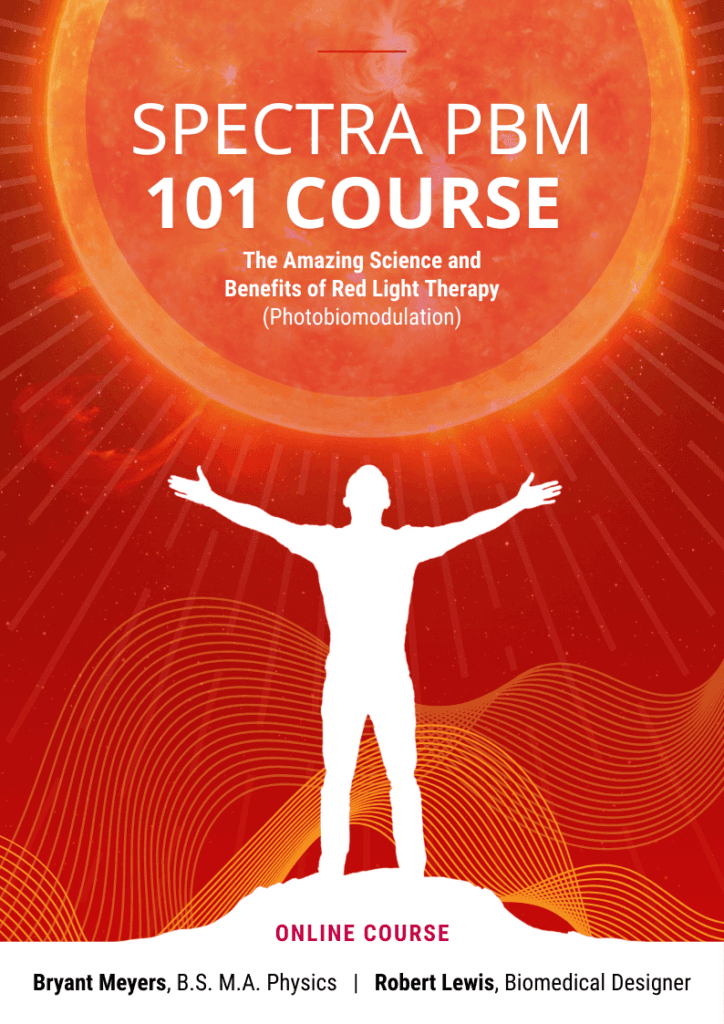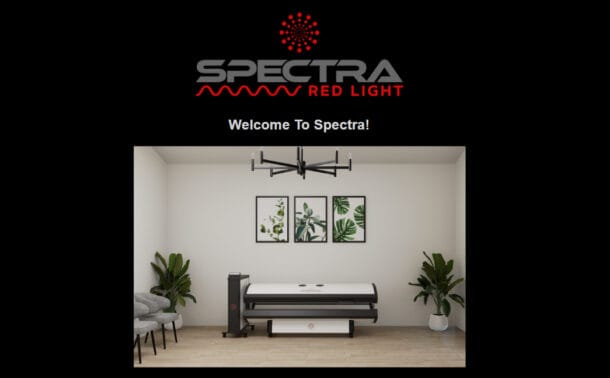Bone health is essential for overall mobility, structural integrity, and metabolic balance within the human body. The continuous process of bone remodeling, in which old or damaged bone tissue is resorbed by osteoclasts and replaced by new bone matrix synthesized by osteoblasts, is fundamental to maintaining skeletal strength and function. However, various factors such as aging, metabolic disorders, and injury can impair osteoblast activity, leading to conditions like osteopenia, osteoporosis, and delayed fracture healing.
Recent advancements in photobiomodulation (PBM) have demonstrated that Red Light Therapy (RLT), specifically in the red and near-infrared spectra, plays a significant role in enhancing osteoblast function, supporting bone regeneration, and improving skeletal integrity. By directly stimulating cellular metabolism, mitochondrial function, and gene expression, RLT serves as a non-invasive, drug-free approach to promoting osteogenesis and accelerating bone repair.
At a physiological level, osteoblasts rely on mitochondrial adenosine triphosphate (ATP) production to generate the energy necessary for extracellular matrix deposition, collagen synthesis, and mineralization. RLT interacts with cytochrome c oxidase (COX), the terminal enzyme in the electron transport chain (ETC), to enhance cellular respiration and increase ATP availability. This, in turn, drives osteoblast proliferation, differentiation, and biosynthetic activity. Additionally, RLT modulates reactive oxygen species (ROS) signaling, promoting controlled oxidative stress that activates transcription factors such as RUNX2, a master regulator of osteoblast differentiation.
Beyond direct mitochondrial enhancement, RLT induces nitric oxide (NO) release, leading to vasodilation and angiogenesis, both of which are critical for improving oxygenation, nutrient delivery, and metabolic exchange in bone tissue. The therapy also upregulates essential growth factors, including bone morphogenetic proteins (BMPs) and insulin-like growth factor-1 (IGF-1), further reinforcing osteoblast function and accelerating bone matrix formation.
By leveraging the power of light-based bioenergetic modulation, RLT provides a promising strategy for individuals seeking to support bone density, expedite fracture healing, and optimize skeletal health. This article will explore the precise mechanisms through which RLT influences osteoblast function, examine the scientific evidence supporting its efficacy, and outline practical applications for those looking to incorporate red light therapy into their bone health regimen.
Who Can Benefit from Red Light Therapy for Bone Health?
By stimulating osteoblast function, Red Light Therapy (RLT) supports bone formation, strength, and healing. This makes it beneficial for a wide range of conditions where bone health is compromised or recovery is needed. Here are some key conditions that can benefit from RLT’s effects on osteoblast activation and bone regeneration:
| Osteoporosis and Low Bone Density | Fracture Healing | Post-Surgical Bone Recovery | Stress Fractures and Sports Injuries | Age-Related Bone Degeneration |
|---|---|---|---|---|
| As we age, bone mineral density (BMD) declines, increasing the risk of fractures. Osteoporosis and osteopenia occur when bone breakdown exceeds new bone formation. By enhancing osteoblast activity, RLT may help support stronger bones and slow down bone loss over time. | Bones naturally repair themselves after a break, but healing time varies depending on age, health, and severity of the fracture. RLT can accelerate bone repair by increasing osteoblast proliferation, collagen production, and mineralization, helping fractures heal faster. | After bone-related surgeries (such as joint replacements, spinal surgeries, or dental implants) strong and fast bone regeneration is crucial. RLT can help speed up bone integration and healing, reducing recovery time and improving outcomes. | Athletes and active individuals frequently experience bone stress injuries from repetitive impacts. RLT can aid in repairing microfractures, strengthening bones, and reducing recovery time, making it beneficial for those with high physical demands on their skeleton. | As bones lose density with aging, they become more fragile and prone to fractures. Supporting osteoblast function with RLT may help maintain bone strength and improve overall skeletal health in aging individuals. |
Why It Matters
Maintaining strong bones is essential for mobility, injury prevention, and long-term health. By activating osteoblasts, RLT provides a natural, non-invasive way to support bone regeneration, enhance healing, and maintain skeletal strength, making it a valuable tool for anyone looking to improve their bone health and recovery process.

Mechanism of Action: How Red Light Therapy Stimulates Osteoblasts
The ability of Red Light Therapy (RLT) to enhance osteoblast activity and promote bone regeneration is rooted in its capacity to stimulate cellular metabolism, mitochondrial bioenergetics, and gene expression. By delivering red and near-infrared wavelengths, RLT interacts with key photoreceptors in osteoblasts, initiating a cascade of biochemical responses that drive bone formation, extracellular matrix deposition, and mineralization. Below, we explore the specific mechanisms through which RLT exerts its osteogenic effects.
Absorption of Light Energy and Mitochondrial Stimulation
At the core of RLT’s mechanism is the absorption of photons by chromophores within mitochondria, particularly cytochrome c oxidase (COX), the terminal enzyme in the electron transport chain (ETC). Under normal conditions, COX activity can be inhibited by the presence of excess nitric oxide (NO), leading to reduced adenosine triphosphate (ATP) synthesis and impaired cellular function. RLT effectively photodissociates nitric oxide from COX, restoring electron flow through the ETC and significantly enhancing ATP production.
This surge in ATP availability provides osteoblasts with the bioenergetic resources necessary for proliferation, differentiation, and bone matrix synthesis. Increased ATP levels translate into heightened collagen production, alkaline phosphatase (ALP) activity, and calcium deposition, all of which are essential for osteoid formation and mineralization.
Reactive Oxygen Species (ROS) Modulation and Osteogenic Signaling
In addition to mitochondrial activation, RLT influences reactive oxygen species (ROS) levels, which serve as crucial secondary messengers in cellular signaling pathways. Low to moderate levels of ROS stimulate osteoblast proliferation by activating transcription factors such as RUNX2, a master regulator of osteoblast differentiation and bone formation.
By optimizing ROS homeostasis, RLT prevents oxidative stress-induced apoptosis, ensuring that osteoblasts remain metabolically active and capable of sustaining bone anabolism. This controlled oxidative signaling is also linked to the upregulation of bone morphogenetic proteins (BMPs), which play a pivotal role in skeletal development and fracture repair.
Nitric Oxide Release, Vasodilation, and Angiogenesis
Another key mechanism of RLT is the regulation of nitric oxide (NO) bioavailability. While NO accumulation can inhibit mitochondrial function, its controlled release under RLT promotes vasodilation and enhanced microcirculation in bone tissue. Improved oxygenation and nutrient delivery to osteoblasts are essential for sustaining their anabolic activity.
Additionally, RLT stimulates vascular endothelial growth factor (VEGF) expression, which supports angiogenesis, the formation of new blood vessels in the bone microenvironment. Enhanced vascularization facilitates metabolic exchange, ensuring that osteoblasts receive the necessary substrates for matrix production and mineralization.
Gene Expression and Growth Factor Activation
RLT’s bioactive effects extend to the genomic level, where it upregulates genes involved in osteoblast differentiation and bone synthesis. Among the most significant molecular responses is the activation of RUNX2, IGF-1 (insulin-like growth factor-1), and BMP-2, all of which are fundamental to bone regeneration and remodeling.
- RUNX2: Drives the transcription of genes responsible for osteoblast lineage commitment and extracellular matrix production.
- IGF-1: Enhances osteoblast proliferation, collagen synthesis, and mineral deposition.
- BMP-2: Plays a crucial role in promoting mesenchymal stem cell differentiation into osteoblasts, accelerating new bone formation.
Through these molecular pathways, RLT not only enhances osteoblast function but also supports long-term skeletal integrity by reinforcing the processes of bone modeling and remodeling.
Stimulation of Collagen and Extracellular Matrix Formation
A critical aspect of osteoblast function is the synthesis of collagen type I, the primary structural protein in bone matrix. RLT has been shown to enhance procollagen mRNA expression, leading to increased collagen production and deposition.
As collagen fibrils form, they provide a scaffold for hydroxyapatite mineralization, a process essential for bone strength and durability. The synergistic effect of increased collagen synthesis, osteoid production, and mineral deposition under RLT leads to improved bone density and structural resilience.
Red Light Therapy provides a biochemically-driven, non-invasive approach to stimulating osteoblast activity, accelerating bone formation, and enhancing skeletal health. Through its ability to boost mitochondrial function, modulate oxidative signaling, promote angiogenesis, and activate osteogenic genes, RLT represents a powerful tool for supporting bone regeneration in individuals experiencing fractures, osteoporosis, or compromised bone metabolism.
By leveraging these physiological mechanisms, RLT offers a scientifically backed strategy for enhancing osteoblast performance and optimizing long-term bone integrity.

Clinical and Experimental Evidence Supporting Red Light Therapy for Bone Growth
The efficacy of Red Light Therapy (RLT) in stimulating osteoblast activity, bone matrix formation, and mineralization has been extensively studied in both in vitro models, animal studies, and human clinical research. A growing body of scientific evidence supports the hypothesis that photobiomodulation (PBM) through red and near-infrared wavelengths enhances mitochondrial function, gene expression, and cellular proliferation in bone-forming cells. Below, we review key studies demonstrating the osteogenic effects of RLT.
RLT Studies: Direct Stimulation of Osteoblast Function
Cellular studies have provided compelling evidence that RLT enhances osteoblast proliferation, differentiation, and mineralization at the molecular level. One review article, The Signalling Effects of Photobiomodulation on Osteoblast Proliferation, Maturation and Differentiation, highlights the profound effects of PBM on bone-forming cells:
“PBM research results on osteoblasts showed increased mitochondrial ATP production, increased osteoblast activity and proliferation, increased and pro-osteoblast expression in the presence of red and NIR radiation.” [1]
This increase in mitochondrial ATP production is critical, as osteoblasts require substantial energy to support the biosynthesis of extracellular matrix proteins, including collagen type I, and to facilitate hydroxyapatite mineralization. Additionally, studies have demonstrated that RLT exposure upregulates alkaline phosphatase (ALP) activity, a key enzyme involved in bone mineralization, further validating its role in osteoblast maturation and function.
Another in vitro study, Effect of a 5-aminolevulinic acid gel and 660 nm red LED light on human oral osteoblasts: a preliminary in vitro study, observed significant osteogenic responses when human osteoblasts were treated with red light at 630nm:
“These findings suggest that osteoblastic cells incubated for 45 min with ALAD gel as commercialized and exposed for 7 min to the red light of 630 nm LED showed a statistical increase of cell growth, and a stimulatory effect on ALP activity and mineralization.” [2]
This suggests that red light photostimulation at specific wavelengths enhances osteoblast proliferation and enzymatic activity, contributing to accelerated bone tissue regeneration.
Preclinical studies further reinforce the osteogenic effects of RLT, particularly in the context of fracture healing, bone defects, and osteoporosis prevention. A systematic review and meta-analysis titled Effect of Low-Level Laser Therapy on Bone Regeneration of Critical-Size Bone Defects: A Systematic Review of In Vivo Studies and Meta-Analysis concluded that RLT significantly accelerates early-stage bone formation:
“New bone formation can be increased in early stage by applying low-level laser therapy through stimulating osteoblasts and fibroblasts’ proliferation.” [3]
These findings are particularly relevant for conditions such as osteoporosis, non-union fractures, and post-surgical bone repair, where osteoblast activation is crucial for bone matrix deposition and mineralization. The stimulation of fibroblasts alongside osteoblasts is also noteworthy, as fibroblasts contribute to collagen synthesis and extracellular matrix remodeling, further supporting osseous tissue regeneration.
RLT has been shown to:
- Reduce inflammation and oxidative stress, promoting a favorable healing environment.
- Increase collagen deposition and hydroxyapatite formation, strengthening the newly formed bone.
- Enhance vascularization via VEGF stimulation, improving oxygen and nutrient delivery to regenerating bone tissue.
These preclinical findings provide a strong mechanistic foundation for the use of RLT in human bone repair applications.
The accumulated evidence from clinical studies confirms that RLT is a powerful tool for stimulating osteoblast activity, promoting bone matrix deposition, and accelerating the healing of bone injuries. Through its ability to enhance mitochondrial function, upregulate osteogenic gene expression, and improve vascularization, RLT represents a cutting-edge, bioenergetic approach to bone regeneration.
For individuals dealing with osteoporosis, fractures, or post-surgical bone repair, integrating RLT as a supportive therapy may significantly improve bone health outcomes and recovery rates.

The ability of Red Light Therapy (RLT) to enhance osteoblast proliferation, differentiation, and extracellular matrix mineralization establishes it as a powerful tool for bone regeneration and skeletal health optimization. By harnessing the biological effects of red and near-infrared wavelengths, RLT directly stimulates mitochondrial ATP production, modulates reactive oxygen species (ROS) signaling, promotes nitric oxide (NO) release, and upregulates osteogenic gene expression. These mechanisms collectively drive the anabolic processes of bone formation, collagen synthesis, and hydroxyapatite deposition, essential for bone density maintenance and structural integrity.
To support users in achieving optimal dosing, we encourage the use of our Red Light Therapy Dose Calculator, which is specifically designed to help users tailor their sessions.
Scientific evidence from clinical research demonstrates that RLT significantly enhances osteoblast activity, accelerating the natural bone remodeling cycle and facilitating fracture repair, post-surgical bone regeneration, and osteoporosis prevention. The documented benefits include:
- Increased osteoblast proliferation and ALP activity, supporting bone matrix formation and mineralization.
- Upregulation of RUNX2, BMPs, and IGF-1, driving osteogenic differentiation and skeletal tissue repair.
- Improved microcirculation via NO-induced vasodilation and VEGF-mediated angiogenesis, enhancing nutrient and oxygen delivery to bone tissue.
- Reduction of oxidative stress and inflammation, creating a favorable environment for osteogenesis and bone healing.
As a non-invasive, scientifically validated bioenergetic therapy, RLT presents a safe and effective approach for individuals seeking to enhance bone density, accelerate recovery from fractures, and optimize long-term skeletal health.
References
[1] Crous A, Abrahamse H. The Signalling Effects of Photobiomodulation on Osteoblast Proliferation, Maturation and Differentiation: A Review. Stem Cell Rev Rep. 2021 Oct;17(5):1570-1589. doi: 10.1007/s12015-021-10142-w. Epub 2021 Mar 8. PMID: 33686595.
[2] Pierfelice TV, D’Amico E, Iezzi G, Petrini M, Schiavone V, Santalucia M, Pandolfi A, D’Arcangelo C, Piattelli A, Di Pietro N. Effect of a 5-aminolevulinic acid gel and 660 nm red LED light on human oral osteoblasts: a preliminary in vitro study. Lasers Med Sci. 2022 Dec;37(9):3671-3679. doi: 10.1007/s10103-022-03651-8. Epub 2022 Oct 4. PMID: 36192667; PMCID: PMC9708760.
[3] Kheiri A, Amid R, Kheiri L, Namdari M, Mojahedi M, Kadkhodazadeh M. Effect of Low- Level Laser Therapy on Bone Regeneration of Critical-Size Bone Defects: A Systematic Review of In Vivo Studies and Meta-Analysis. Arch Oral Biol. 2020 Sep;117:104782. doi: 10.1016/j.archoralbio.2020.104782. Epub 2020 May 28. PMID: 32535292.


